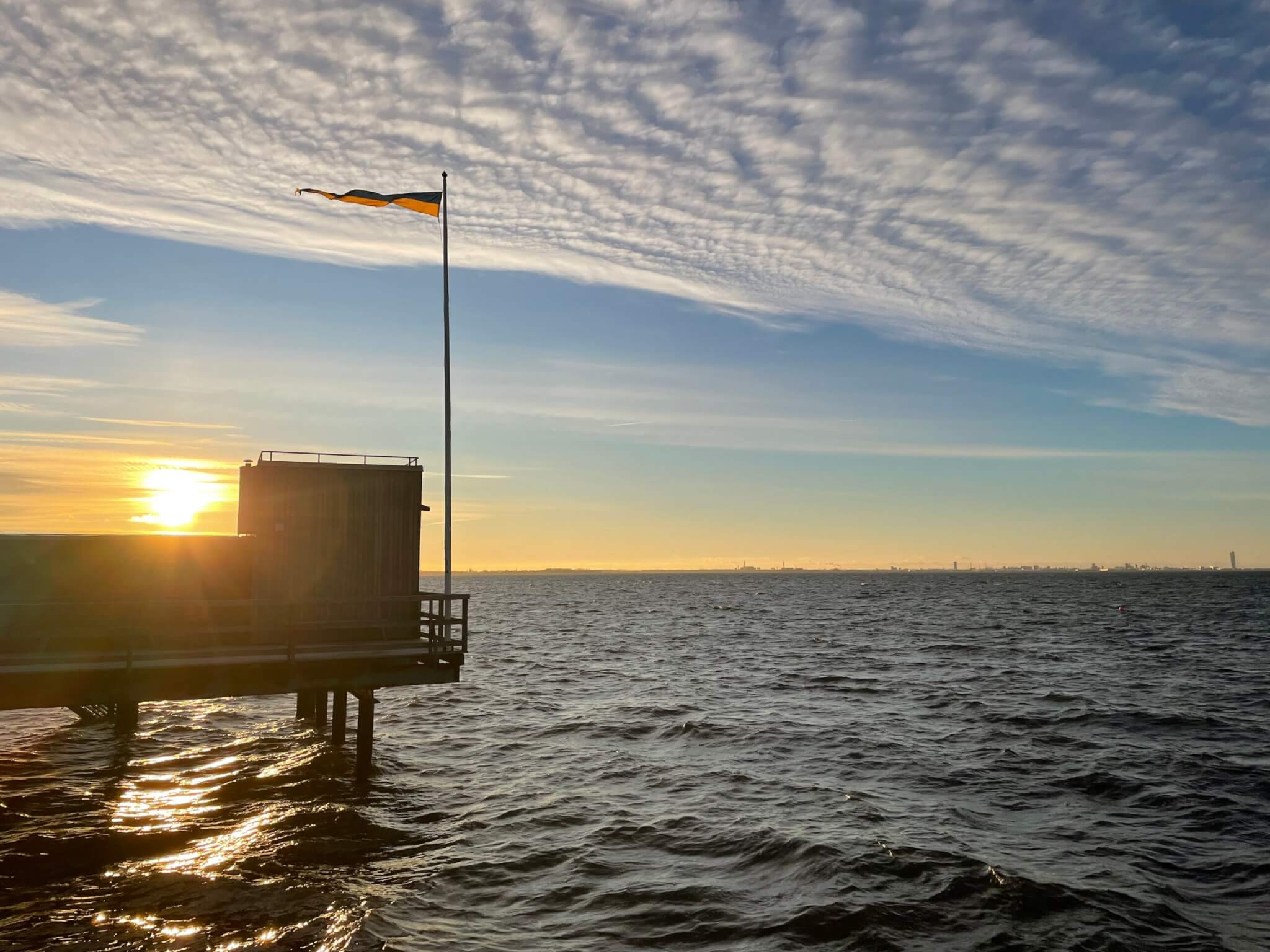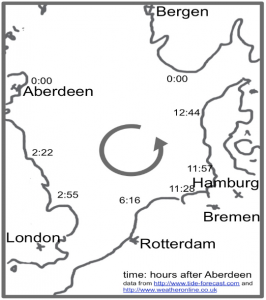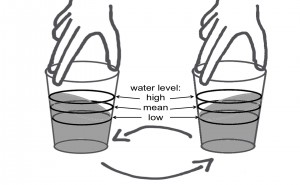
Tides in a glass
A very simple experiment to show how waves can travel around an ocean basin.
I wrote these instructions for a book project that I was lucky enough to get involved in at the very last minute and figured I could just share them here, too. Why not try a new style every once in a while? You tidal purists out there – come up with a better experiment if you aren’t happy with this one! :-)
—
- Age: 6 years and above
- Group size: 1-3 per group
- Time: 15 min
- Topic: Tides in enclosed basins
Resources and Materials:
- 1 clear plastic cup
- 1 waterproof pen
- water
Introduction:
[In a previous experiment] we have learned how tides are caused by the sun and the moon. In the picture there, we see the two “mountains” of water that form on either sided of the earth. The earth rotates underneath those two “mountains” of water, which is what causes high tides twice a day.
But what happens when those “mountains” of water reach a coast? Clearly the continents are not flooded twice a day every day, so the “mountains” of water cannot travel all the way around the globe undisturbed. What does happen instead is that the tidal wave will propagate around the rim of an ocean basin, even in semi-enclosed basins like the North Sea, which we will show in the experiment below.
- Fill the plastic cup approximately half full with water.
- Mark the still water level with a permanent marker.
- Gently start twirling the cup and observe how the water level starts changing: On one side of the cup it rises, on the other side it falls.
- Continue twirling the cup and observe how the “mountain” of water moves all the way round the cup, leaning against the side of the cup, and how opposite of the “mountain” a “valley” forms that also travels around the cup.
- Mark those two new water levels: The higher one is the high tide line of your ocean in a cup, the lower one the low tide line.
This is how high tide and low tide travel around an ocean basin. In the real world, though, coastlines are not as smooth as the walls of a cup, and also ocean basins are connected to each other, so tides in different basins interact. For a real world example, look at the tides in the North Sea, shown in Figure 2.

Figure 2: Simplified timing of tides in the North Sea.

Tidal elevations and currents in Fowey, Cornwall | Adventures in Oceanography and Teaching says:
[…] other day we talked about a very simplistic models of tides in a glass, and how the high tide and low tide travel as a wave around an ocean basin. This isn’t really […]